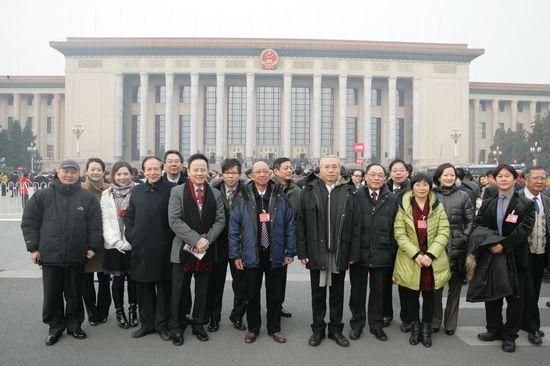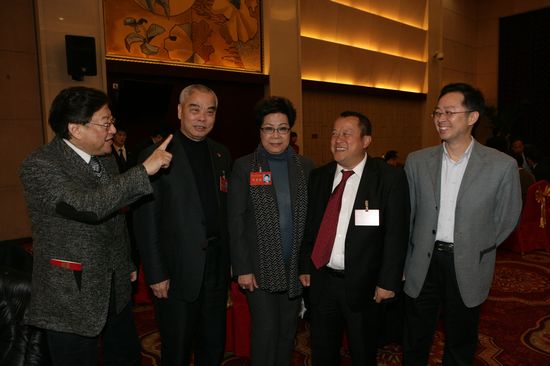Special Delegates from HK and Macao:
Properity in Exchange and Cooperation
In recent years, culture and arts between mainland and HK and Macao have witnessed the increasingly frequent exchange and closer cooperation, and interaction has become the main character of art industry development. The mainland is blessed with massive professional teams and talents, vast and prosperous market and abundant literary and art resources, while HK and Macao, thanks to their unique background of internationalization, are important windows to showcase Chinese excellent culture, which are endowed with more flexibility in Chinese and Western cultures integration and rich experience in art industry management. The further art exchange between mainland and Hong Kong and Macao will be complimentary to each other, and then make their contribution to the great revival of Chinese civilization and the construction of common spiritual homeland of Chinese nation. As far as we can see, those special delegates from Hong Kong and Macao of the 9th National Congress of CFLAC are endeavoring to bring this vision into reality.

Family Photo of Special Delegates from Macao
When Wu Liancheng, a photographer from HK, was quite young, his parents would introduce Chinese traditional culture to him, expecting this young man to bring down this cultural root from generation to generation. In 1969, Wu Liancheng took up photography, and from then on he wished to do something to promote the traditional culture. “I have given many photography lectures to young people in HK, and encouraged them to take photos in the mainland so that they could show their works to their family and friends as a way of gaining knowledge of mainland. During Shanghai Expo, I organized my counterpart in HK to exchange views with friends in photographic circles in mainland. As to photographic creation, our works is more creative while that of our counterpart in mainland is better in contents. Only by exchange can both of us gain improvement.”

Special Delegates from Hong Kong Talked with each other
Lin Tianxing, a famous artist of Chinese wash painting, has just finished his individual exhibition in Milan and flown to Beijing for this National Congress. As he was often invited to hold exhibitions all over the world, in his exchange with western counterpart, he would convey the innovative ideas of the contemporary Chinese arts. Once after a visit to the exhibition, an Itaian artist confessed that he had never seen such a Chinese traditional painting with intense colors as he had thought that much blank was supposed to be the characteristic of Chinese painting. Then Lin said to him, “I’m afraid that you may have misunderstanding of Chinese painting. Now Chinese painting is of multiple elements, too. Not confined to lofty mountain, flowing river or silent hermit, Chinese painting is also a real reflection of life with various colors.” In Lin’s eyes, most westerners’ knowledge might remain half a century or even a century ago. Therefore, it is a must that cultural and art exchange shall bring those foreigners to know about today’s China.
When China was going to enter WTO a decade ago, foreign films competition was commonly metaphored as the Coming Wolf to Chinese film circle and industry. Those who were optimistic took it as a challenge as well as an opportunity, while those pessimistic viewers held that the open market would definitely deal a deadly blow to Chinese films. In the following decade, Chinese films have witnessed a curve development from recession to revival, experimental trials of various genres, failure of superficial presentation and success of popular blockbuster. The annual production of Chinese films has leapt from less than 100 up to over 500 this year, and the box office will exceed 13 billion RMB. In this way, Chinese films have confidently occupied their own positions in the global network, especially in the co-production with international counterparts.














